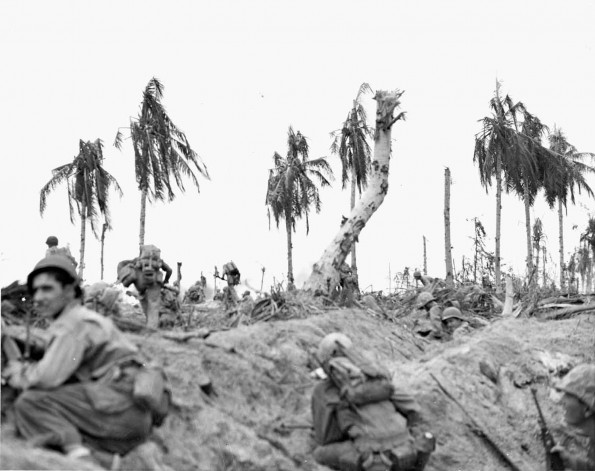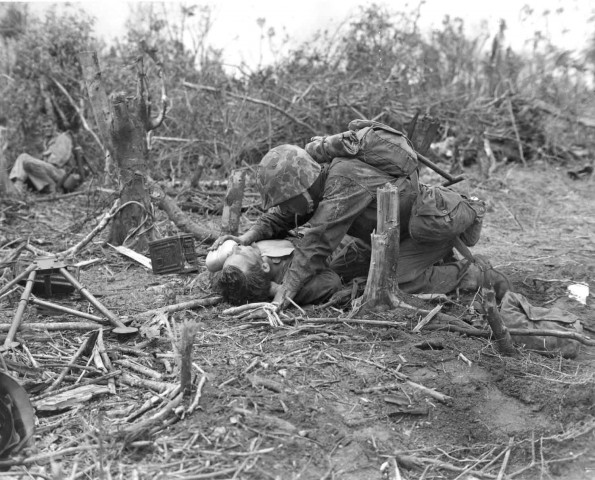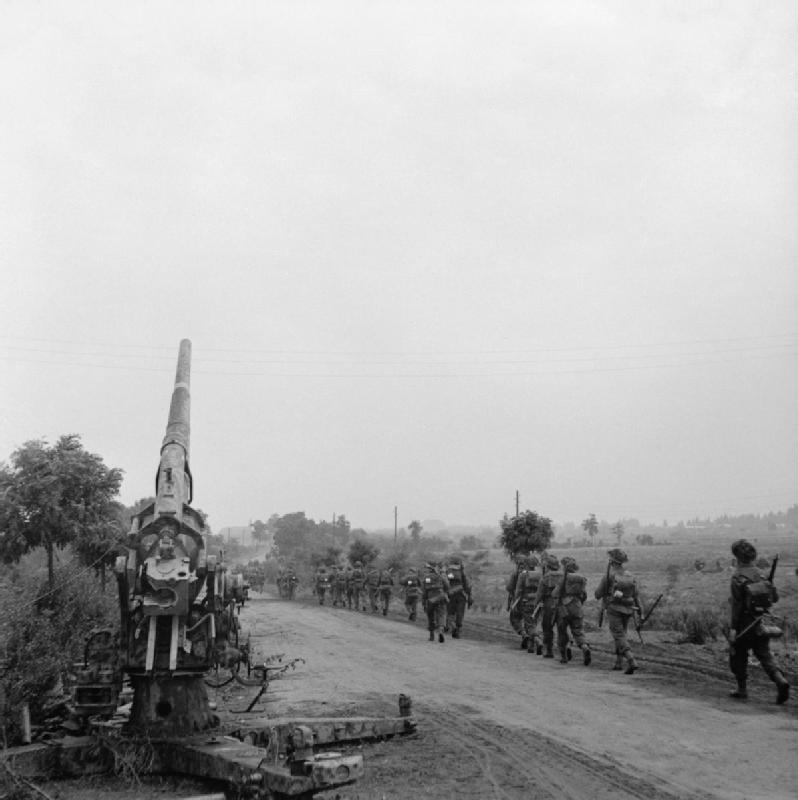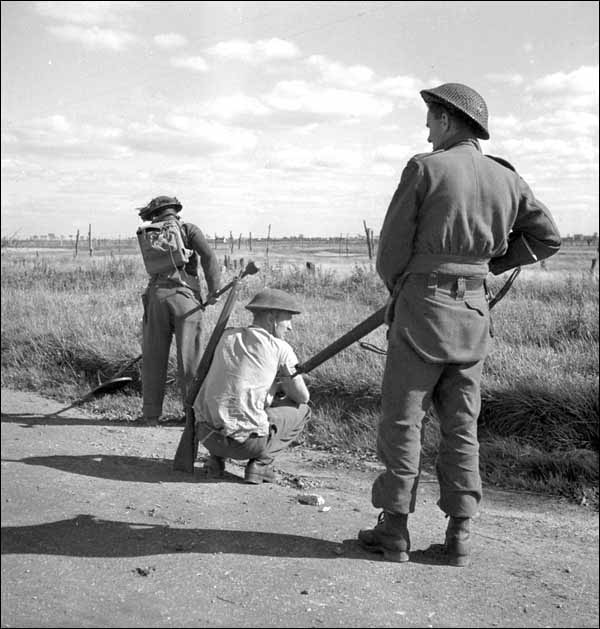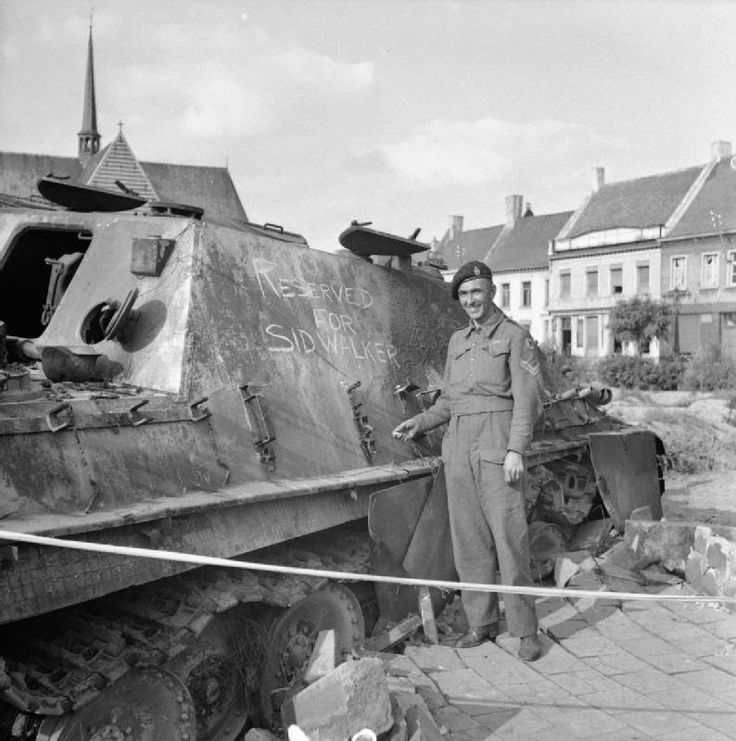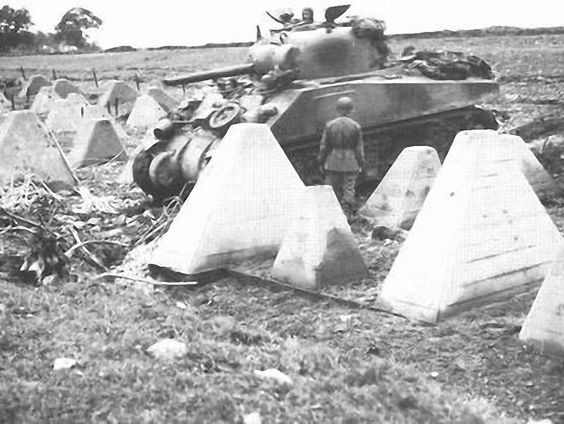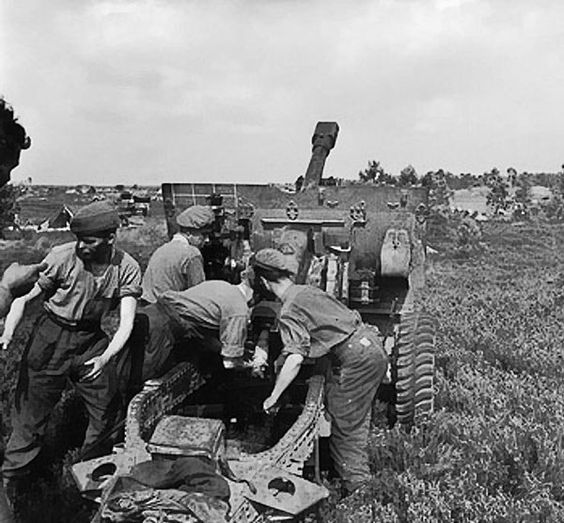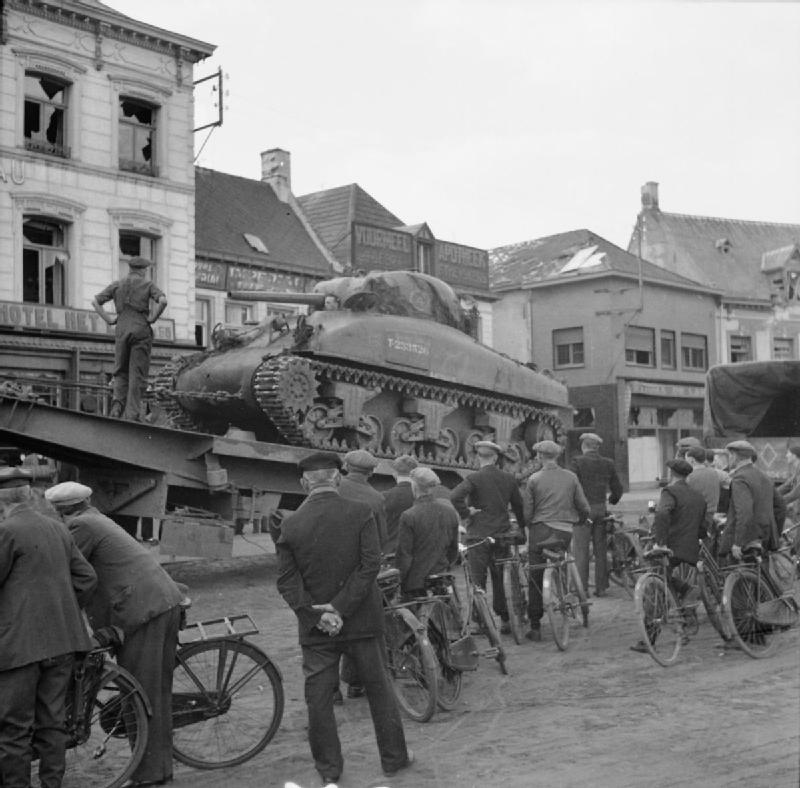Air Operations, CBI
BURMA- 12 14th Air Force B-25s attack Kutkai.
- Despite bad weather, 10th Air Force P-47s sweep the Lungling-Wanling-Loiwing road in eastern Burma and southwestern China.
- 20 308th Heavy Bomb Group B-24s attack Hengyang.
- 28 341st Medium Bomb Group B-25s attack Chuanhsien, Lengshuitang, Pakmushih, and a ferry at Yuangshsho.
- More than 130 14th Air Force fighter-bombers sorties are mounted against numerous targets in the Salween River area and east-central China.
- 5th CACW Fighter Group P-40s down 2 Ki-43 'Oscar' fighters in an engagement near Siansiang at 0900 hours.
- 23rd Fighter Group P-40s fail to score any confirmed victories in an engagement near Shaoyang at 0945 hours.
- 2 3rd CACW Fighter Group P-40s down a Ki-45 'Nick' fighter near Kokow during the morning.
- A 23rd Fighter Group P-51 downs an A6M Zero near Kinhwa at 1100 hours.
- 19 7th Heavy Bomb Group B-24s transport fuel from India to Liuchow, China.
Air Operations, East Indies
- In their first response to the Allied invasion, Japanese aircraft mount light raids against US ground and naval forces at Morotai.
- FEAF B-24s attack the Ambesia and Kendari airfields on Celebes.
- B-24s and B-25s attack airfields on Ceram, Kamarian, Amboina, and Boeroe.
- B-25s attack a large warehouse at Gorontalo, Celebes.
- A VC-66 FM downs an A6M Zero at sea at 0650 hours.
Air Operations, Europe
RAF BOMBER COMMANDDaylight Ops:
Minor Ops:
- 14 Stirlings and 4 Hudsons are on Resistance operations, and there are 2 Mosquitos on Ranger patrols and 9 RCM sorties.
- There are no losses.
- Bomber Command's main operations on this night are in support of Operation MARKET GARDEN, the landings by British and American airborne troops at Arnhem and Nijmegen which take place the following morning. 200 Lancasters and 23 Mosquitos of Nos. 1 and 8 Groups bomb the airfields at Hopsten, Leeuwarden, Steenwijk and Rheine, and 54 Lancasters and 5 Mosquitos of Nos. 3 and 8 Groups bomb a flak position at Moerdijk. The runways of all the airfields are well cratered but there are only near misses at the flak position, although its approach road is cut. 2 Lancasters are lost on the Moerdijk raid.
- 29 Mosquitos are sent to Brunswick and 4 to Dortmund, and there are 29 Mosquito patrols and 14 RCM sorties.
- 1 Mosquito is lost on the Brunswick raid.
GERMANY:
- 295 VIII Figher Command P-47 and P-51 figher-bombers attack the Ahlhorn Airdrome and targets around Kaiserlautern and Mannheim.
FRANCE:
- XIX TAC fighters and fighter-bombers help the US 3rd Army repel several German Army counterattacks in northeastern France.
- IX TAC fighter pilots down 12 FW-190s over Aachen between 1630 and 1810 hours.
- 150 9th Bomb Division B-26s and A-20s attack a road and rail embankment at Arnemuiden and a dike at Bath.
ITALY:
- 12th Air Force B-25s and B-26s attack defensive positions and supply dumps around Bologna and Rimini.
- XII Fighter Command fighter-bombers support the US 5th Army's continuing attacks on mountainous positions of the Gothic Line in which German Army forces are still holding out.
Air Operations, Japan
3 28th Composite Bomb Group B-24s attack the Kataoka naval base.
[Air Operations, New Guinea
V Fighter Command fighter-bombers attack the airfields at Manokwari, Moemi, Sagan, and Waren.
[Air Operations, Volcano Islands
17 30th Heavy Bomb Group B-24s based at Saipan attack Iwo Jima.
[Eastern Front
Guderian counterattacks near the Gulf of Riga with troops brought from far south of the front, spearheaded by a scratch Panzer division under Col-Gen Hyazinth Graf Stachwitz. Contact will be re-established between Army Groups Center and North by September 26.
There is a new large-scale Soviet offensive in the Baltic States by troops of the Leningrad Front and the 3 Baltic Fronts. This offensive will involve principally attacks toward Riga and Tallinn.
In the south in Bulgaria, Sofia is taken by that proportion of 3rd Ukraine Front which has crossed the Danube before turning west to threaten the retreat of the German forces in Greece. The German forces in danger are Army Group F of Maximilian von Weichs and E under Alexander Löhr. In Rumania fighting continues between the South Ukraine Army Group and the 2nd Ukraine Front.
NORTHERN SECTORThe fighting in the Baltic intensifies as the 3rd Panzer Army launches a new counterattack aimed at strengthening the ling with Army Group North. More than 400 panzers strike the 51st and 5th Guards Tank Armies. Bitter fighting ensues as the Germans advance slowly. To the east, the 22nd Army is hit by a 16th Army counterattack at Dobele.
CENTRAL SECTORElements of the 1st Polish Army cross the Vistula at Magnuszew and begins to attack north in an effort to break through to the Home Army. However, the 9th Army puts up a ferocious defense, inflicting heavy casualties. Inside Warsaw the 25th Panzer Division has pushed the Poles back about half a mile in Zoliborz after fierce battles. Progress is also made in Czerniakow as the Poles lose their grip on the Vistula.
SOUTHERN SECTORThe 2nd Hungarian Army and 8th Army attacks east of Cluj, hitting the 7th Guards, 4th Rumanian and 40th Armies hard.
[Germany, Planning
Hitler outlines his plans for an offensive in the Ardennes to his generals. He tells Keitel, Jodl, and Guderian: 'I have just made a momentous decision. I shall go over to the counterattack, that is to say, here (pointing to a map) - out ot the Ardennes, with the objective Antwerp.' At the time, Germany has 55 divisions on the Western Front, facing 96 Allied divisions in place and another dozen in Britain.
[Greece
British commandos land on Kithira Island, south of the Peloponnese.
[Italy
The headquarters of the British 8th Army issues instructions for the advance on Rimini. The British V Corps will follow Highway 9 in the direction of Bologna and the Canadian I Corps will make for Ravenna and Ferrara.
[Moluccas
On Morotai the US 31st Div extends the depth of its beachhead by an average of 4 miles, while the Japanese begin a series of not very powerful air raids.
[Occupied Denmark
A general strike begins that will last until September 21.
[Occupied Holland
Hendrick Colijn, the ex-Prime Minister of Holland, dies in German custody. He was 75.
[Pacific
- The Japanese escort carrier Unyo is sunk by the US submarine Barb (SS-220) in the South China Sea. Although the US surface fleet has no presence in the South China Sea, US submarines are effectively interdicting Japanese supply convoys running between the Dutch East Indies and Japanese forces in Southeast Asia.
- US submarine operate against Japaness shipping south of Formosa: Picuda (SS-382) sinks the army cargo ship Tokushima Maru (5975t) in Bashi Channel; Redfish (SS-395) sinks the fleet tanker No.2 Ogura Maru (7311t).
- The US submarine Sea Devil (SS-400) sinks the Japanese submarine I-364 off Yokosuka, Japan.
- The Japanese cargo vessel Imaji Maru (1986t) is sunk by a mine in Brunei Bay.
Palaus
The Marines consolidate and extend their beachhead on Peleliu. The 7th Marine Regt occupies the south point of the island and begins mopping up. The beachhead reaches a depth of about a mile and a quarter, despite strong fire by the Japanese. The 5th Marines capture a good part of the island's airfield. Gen William H. Rupertus takes over command on land now that the amphibious phase of the operation, under naval command, is completed.
[Images from September 16, 1944
|
|
|
|
|
|
|
|
